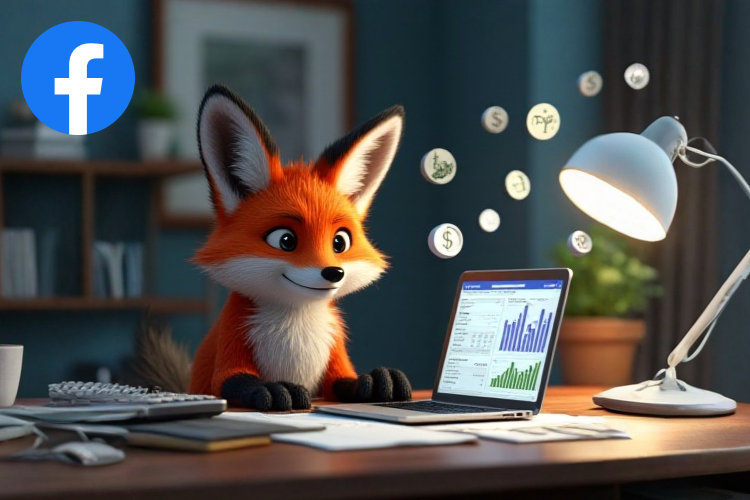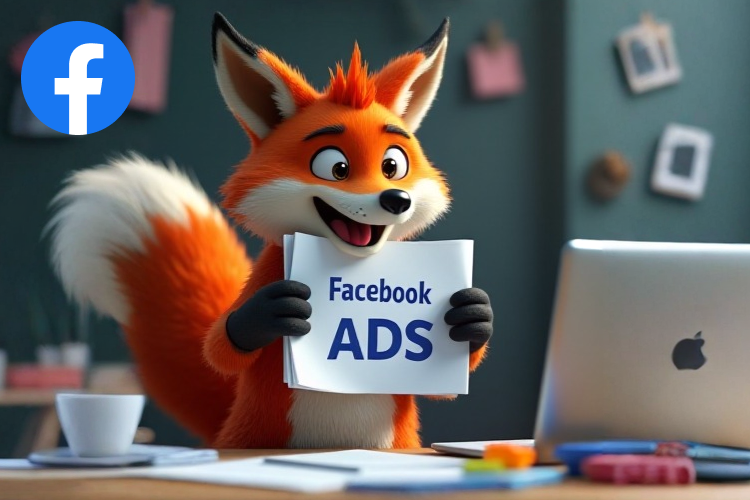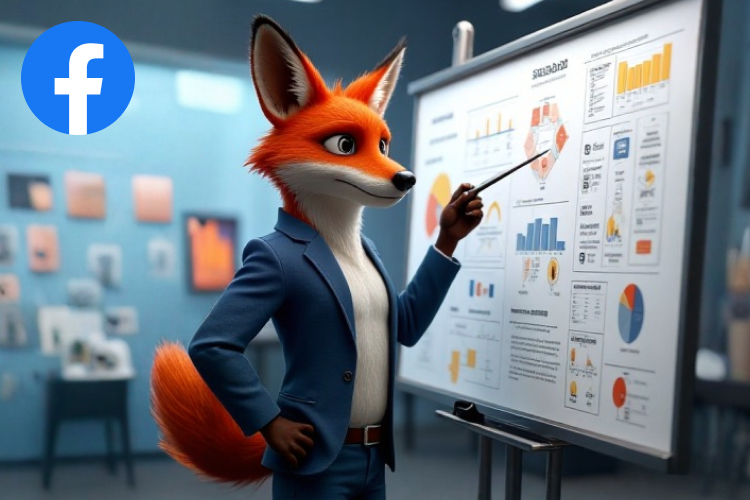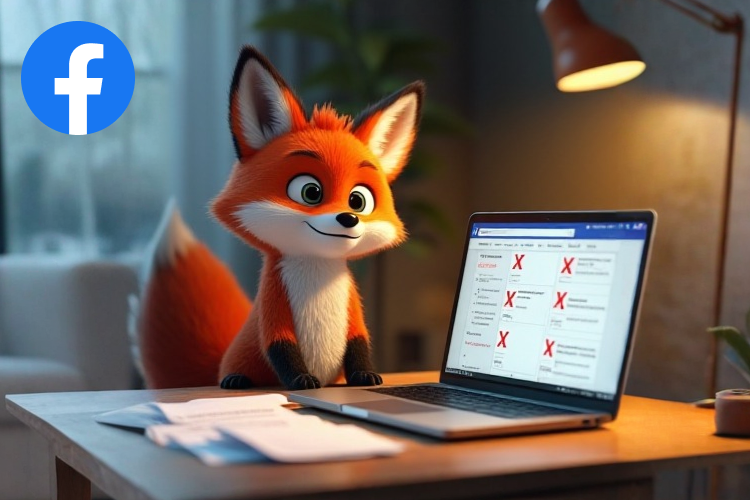Facebook Ads Budget and Bidding Strategies

- How to correctly calculate the budget for a campaign
- Defining campaign goals
- Considering the audience and competition
- Budget allocation methods
- Automatic and manual betting strategies: what to choose
- Automatic bets
- Manual bets
- How to choose between automatic and manual betting
- How to optimize costs for better results
- Target audience optimization
- Creative optimization
- Optimizing bids and budgets
- Using retargeting
- Campaign analysis and adjustments
1. How to correctly calculate the budget for a campaign
Budget is a key aspect of any advertising campaign. Its size and distribution determine the success or failure of your Facebook Ads efforts. How to calculate the right budget so that it is sufficient to achieve your goals, but not wasted?
Defining campaign goals
Before you set a budget, it’s important to understand what you want to achieve with your advertising. The goal of your campaign will influence how resources are allocated. Goals can vary:
- Increasing brand awareness: In this case, the focus is on reaching the largest possible audience. This requires a larger budget in the initial stages.
- Driving traffic to your site: It’s important to consider the average cost per click (CPC) in your industry.
- Conversions: If your goal is sales or subscriptions, you need to know the average cost per conversion (CPA) and the average revenue per transaction.
“Clearly defining goals allows you to allocate the budget more effectively and achieve better results.”
Considering the audience and competition
Knowing your audience and competitors is a key factor in calculating your budget. A narrower and more targeted audience may require a larger budget due to the high competition for attention.
1. Audience size
The size of your audience affects how much it costs to reach a certain number of people. If your audience is large, you may need a larger budget to achieve significant reach.
2. Niche competition
The more competitors advertising in your niche, the higher the cost of advertising. This increases the cost per click and impression.
Example:If you sell a popular product that many competitors promote, your budget needs to be adequate to compete for your audience’s attention.
Budget allocation methods
Budget allocation is important to ensure efficiency. There are several approaches to this process:
1. Daily budget
A daily budget is the amount you’re willing to spend each day. It helps you better control your spending, especially if you’re on a tight budget.
2. Total campaign budget
The total budget is spread over the entire campaign period, allowing for more flexibility in allocating funds based on ad performance.
3. Stages of budget allocation
Using your budget wisely at different stages of your campaign can help you achieve better results. For example, you can spend more in the early stages to build awareness, then reduce your spending once your campaign has a steady level of engagement.
“Budget allocation is not just about how much to spend, but also when and on what.”
Calculation of the optimal budget
Budgeting should be based on forecasts and analytical data. Here is a simple example:
- Determine the average cost per click in your niche.
- Evaluate the conversion rate of your website or landing page.
- Determine the average revenue from one transaction.
- Use this data to calculate your expected profit and, accordingly, your budget.
Example:If the average cost per click is $0.50, the conversion rate is 2%, and the average revenue per deal is $100, you need to spend approximately $50 to get one deal.
Conclusion
Budgeting for Facebook Ads isn’t just about determining how much you’re willing to spend. It’s a strategic process that takes into account your goals, audience, and competition. A balanced approach will help you make the most of your resources and achieve your goals.
2. Automatic and manual betting strategies: what to choose
Introduction When setting up Facebook ads, one of the key points is choosing a bidding strategy. There are two main approaches: automatic and manual bidding. Each has its own advantages and disadvantages, and the right choice can significantly affect the success of your advertising campaign.
Automatic bets
What is it? Automated bidding is a feature that allows Facebook to determine the optimal cost per click or conversion based on your campaign goals. The platform’s algorithms analyze numerous factors to ensure maximum results within your set budget.
Advantages of automatic bets
- Convenience: You don’t need to waste time constantly monitoring and adjusting your bids.
- Optimization: Facebook algorithms use large amounts of data to maximize results.
- Efficiency: Suitable for those who do not have enough experience or time for in-depth analysis.
Disadvantages of automatic bets
- Less control: Your dependence on algorithms can lead to unforeseen costs.
- Limited flexibility: Inability to adjust bids for specific audiences or ads.
Example: Imagine you’re launching a campaign to sell a new clothing collection. Using automated bidding, you can focus on creating creative and segmenting your audience while Facebook’s algorithm optimizes your spend.
Manual bets
What is it? Manual bidding allows you to set the maximum amount you’re willing to pay for a click or conversion. This approach provides greater control over your costs and allows you to tailor your bids to your specific campaign goals.
Advantages of manual betting
- Full control: You know exactly how much you spend on each click or conversion.
- Flexibility: The ability to adjust bids during a campaign depending on its performance.
- Targeted optimization: The ability to adapt bids to different audiences or campaign stages.
Disadvantages of manual betting
- Time-consuming: Requires constant monitoring and analysis.
- Risk of making the wrong choice: Incorrectly set bids can lead to a decrease in campaign performance.
Example: If you’re running a campaign for a narrow audience with high conversion potential, manual bidding will allow you to more precisely manage your costs and achieve better results.
How to choose between automatic and manual bets?
1. Analyze your resources and experience If you have limited resources or lack experience managing ads, automated bidding can be a good place to start. For more experienced advertisers, manual bidding offers more optimization opportunities.
2. Consider your campaign goal For campaigns that aim to reach a mass audience, automated bidding can be more effective. If your campaign is targeting a specific audience or requires precise cost optimization, manual bidding will provide the flexibility you need.
3. Test and analyze There is no one right solution for all campaigns. Conduct A/B testing to understand which bidding strategy works best for your target audience and goals.
Quote: “Bid optimization isn’t just about choosing between automatic and manual options. It’s about understanding what works best for your audience and goals.”
Conclusion The choice between automated and manual bidding depends on many factors: your goals, experience, and resources. The main thing is not to be afraid to experiment and find the most effective approach for your advertising campaign.
3. How to optimize costs for better results
When it comes to Facebook advertising, it’s important to not only set up your campaigns effectively, but also optimize your spend to maximize your ROI (return on investment). In this section, we’ll look at strategies that will help you reduce your spend without compromising your results.
Target audience optimization
1. Audience segmentation One of the most effective ways to optimize your spend is to correctly define your target audience. The more precisely you set it up, the less you will spend on unnecessary impressions.
Example: Consider segmenting your audience by interests, geography, or behavioral characteristics. For example, if you sell sports equipment, target people who are actively interested in sports.
2. Using Lookalike Audiences Facebook allows you to create audiences that are similar to your existing customer base. This helps you focus on users who already have a propensity for your products or services.
“Similar audiences help reduce customer acquisition costs by delivering impressions to those who are more likely to make a purchase.”
Creative optimization
1. Test creatives A/B testing is a key tool for identifying the most effective ads. Test different headlines, images, and copy to find the combination that delivers the best results.
Example: Run multiple ad variations with different images and slogans. Track which ad gets the most clicks and conversions.
2. Use video content Videos have higher engagement than static images and often drive better results at a lower cost.
“Video content can be a decisive factor in reducing cost per click and increasing user engagement.”
Optimizing bids and budgets
1. Using Daily and Lifetime Budgets Determine which budget type is best for your campaign. A daily budget allows you to spread your spending evenly throughout the day, while a lifetime budget gives you more flexibility in how you spend your money throughout the campaign.
2. Bidding Automation Automated bidding can help reduce the cost of clicks and conversions by allowing Facebook to optimize your spend based on your goals.
Using retargeting
1. Set up retargeting campaigns Retargeting allows you to re-engage with users who have already interacted with your site or product. This ensures better conversion and reduces the cost of acquiring new customers.
Example: Run a retargeting campaign for visitors who added items to their cart but did not complete the purchase.
“Retargeting is an effective way to bring back potential customers who have already shown interest in your product.”
Campaign analysis and adjustments
1. Metric Monitoring Regularly analyze key metrics such as CTR (click-through rate), CPC (cost per click), and ROI. This will help you identify ineffective campaigns in a timely manner and make necessary adjustments.
2. Using reports Facebook provides detailed reports that help you evaluate the effectiveness of your campaigns and find ways to optimize.
“Continuous analysis of metrics allows you to respond in a timely manner to changes in campaign performance and minimize costs.”
Conclusion
Optimizing your Facebook advertising spend is a process that requires constant analysis and adjustment. Properly setting up your audience, creatives, and bids will help you achieve better results with minimal costs. Don’t be afraid to experiment and test new approaches to maximize your ROI.



